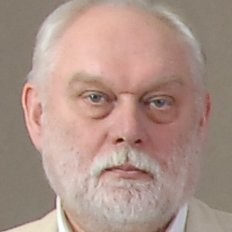The discussion of the future of the state environmental control (SEC) in Ukraine has been ongoing for the last five years, since the draft law “On State Environmental Control” (No. 3091) was submitted to the parliament on February 19, 2020. The discussion mainly boils down to disputes between inspectors and polluters about the procedures for inspecting enterprises and methods of preventing environmental pollution through fines for violations of environmental legislation.
However, the need to align with Part 8 of the Ukrainian President’s Peace Formula (overcoming the consequences of ecocide) has added a new dimension to this discussion: how can potential compensation for environmental damage resulting from Russian aggression either support or impede Ukraine’s post-war environmental recovery and green transition?
Since it is impossible to restore ecosystems using only prevention and fines, in this article we consider a Roadmap for reforming Ukraine’s legislative framework for environmental damage assessment. The Roadmap was proposed by the author within the Sweden-UNDP project for establishment of a Coordination Center for Environmental Damage Assessment.
The problem of effectiveness of the state environmental control system (SEC) for possible compensation of the environmental damage resulting from Russian aggression was highlighted in the spring of 2022, right after the start of full-scale invasion. Then, at the Operational Headquarters of the State Ecological Inspection of Ukraine (SEI), a Working Group (WGEDA) was created to develop methods and procedures for calculating damages caused to the environment by the aggression. The group included Ukrainian and international experts on environmental issues.
One of the major misunderstandings between international experts and the SEI was that Ukraine used to assess environmental damages from the aggression the methodologies and environmental legislation that was adopted back in Soviet times when Ukraine and Russia were within the same state. When asked why Ukraine expects compensation from Russia based on these national methodologies, the SEI’s response was: “Our task is to monitor compliance with Ukrainian legislation; we have no other methods available.” When asked about the post-war green future of Ukraine, in particular, how the Ministry of Environment plans to restore the war-damaged environment using prevention and in the absence of responsibility for status and restoration of damaged environment, there was no answer. Probably because the ministry’s name includes only “environmental protection” and not “restoration.”
Although the Soviet “normative” approach to environmental control inherited by Ukraine is very ineffective in recovering compensation for environmental damage, no efforts have been made to change these Soviet-era practices since 1991. Before the full-scale war, the funds collected by the State Environmental Inspectorate (SEI) at the national level for damages caused by violations of environmental legislation amounted to just about a quarter of the SEI’s budget. These sums were insufficient to change the behavior of polluters, let alone to restore the environment.
WGEDA experts predicted that the existing SEC system would be even less effective in securing potential international compensation for environmental damage caused by Russian aggression. Before the war, the SEI imposed fines amounting to billions of hryvnias per year for violations of environmental legislation, although it actually collected no more than UAH 100 million per year. During the war, however, using arbitrarily defined by the state war coefficients, relying only on data about environmental threats and without any measurable data on the actual environmental impact (see EcoThreat website) SEI accounted for trillions of hryvnias in damages to the state caused by Russia’s violations of Ukrainian environmental laws. Nevertheless, as WGEDA experts warned, it is unrealistic to expect that Ukraine can receive those trillions, since chances to recover national fines for law violations in international courts are minimal.
To submit the data to the Register of damages caused by Russian aggression created by the Council of Europe in Hague, assessment of these damages must be based on internationally recognized approaches and methods. First of all, according to the European Commission recommendations, Ukrainian legislation on environmental responsibility should be harmonised with the EU acquis, in particular, the Directive on environmental responsibility should be transposed.
Besides, it is necessary to finally add to the preamble of the Water Code of Ukraine the first paragraph of the EU Water Framework Directive, which was omitted during the Directive approximation in 2016: Water is rather not a commercial product like any other, but a heritage that should be preserved, protected (and restored for transmission to future generations – author), and it should also be treated as such. This would be especially appropriate now, on the path to the EU.
Unfortunately, decision-makers ignored recommendations of the WGEDA experts. Instead, Ukraine’s Ministry of Environmental Protection proposed to use damage assessment methodologies based on the Soviet-era “normative” approach. This approach focuses on assessing “losses and damages caused to the state as a result of violations of environmental protection laws” rather than evaluating actual damage to the environment. One exception is the Methodology for Assessing Damage and Losses to Protected Areas and Sites as a Result of the Armed Russian Aggression, which requires a separate discussion.
There are two main reasons why the “normative” approach is ineffective:
- The norms in this approach are set by the state, rather than determined by natural laws and boundaries, as in internationally recognized methodologies. For example, An Environmental Compact for Ukraine: A Green Future recommends such methodologies (see details in our description of Environmental Compact). These features of the Soviet “normative” approach prevent SEI from using international methods.
- Under current Ukrainian legislation, such concepts as “environmental security” and “environmental impact/damage” are not quantified but defined dichotomously (there is or isn’t one). The lack of measurable, objective data on environmental changes and impacts makes dichotomous control ineffective because when you cannot measure, you cannot manage effectively.
Dichotomous management is extremely ineffective because it represents a “zero-sum game”—a scenario in which there is always a winner and a loser, and any gains made by one party are exactly offset by the losses of the other. In this context, there is nothing left for environmental restoration. This type of management allows to punish violators but fails to address fundamental questions about where, how, and why improvements in environmental conditions are needed.
The fastest way to enhance the effectiveness of the state environmental control system is to switch from “normative” approach to environmental control and estimation of environmental damages (control system with zero sum for the environment) to inclusive management of attainment of common development goals with minimum social cost.
Actually, this transition was proposed by European Commissioner Margo Wolström back in 2003 at the Kyiv Conference of Ministers of the Environment. Today she, as the Co-Chair of the High-level Working Group Ermak-Wolström, again proposes this inclusive transition as the first cross-cutting theme of the Environmental Treaty for Ukraine: Green Future.
Today, the fastest way to increase the effectiveness of environmental control, in our opinion, is to supplement its goals and objectives. Namely, it is necessary to add to Article 1 of the draft law “On State Environmental Control” (No. 3091), which is currently being considered by the Verkhovna Rada, a mention of the modern goals of state environmental policy: ensuring sustainable development and reducing environmental risks. As well as to add a reference to the fact that internationally recognized methods estimate environmental damages with the use of measurable changes in natural resources or violations related to natural resource services and by the amount of funds needed to restore the environment to its initial state.
Changes to the draft law “On State Environmental Control” proposed in the Reform Roadmap developed as part of the Sweden-UNDP project to create a Coordination Center for Environmental Damage Assessment (in bold):
- In this law, the terms are used in the following sense:
1) state environmental control are activities of state environmental control bodies to assess: a) the effectiveness of achieving the goals of the state environmental policy of Ukraine – reducing environmental risks and not exceeding the “Planetary Boundaries” of development; b) negative anthropogenic (including military) measurable changes in natural resources or violations related to natural resource services; c) funds needed to restore the environment to its initial state before the aggression of the Russian Federation; and ensuring compliance with environmental protection legislation etc.;
See the full text of the proposed changes in 3091 (1).docx (the file must be downloaded to view the changes).
Of course, such changes in the SEI system are only the first step towards a green future for Ukraine. In the future, it will be necessary to shift the dichotomous understanding of basic environmental concepts – environmental safety and environmental impact assessment. Without such changes we can forget about compensation for environmental damage from Russian aggression or EU membership.
It is clear that the proposed reforms require a comprehensive social discussion. Thus, with this article I invite all interested parties to the discussion.
Фото: depositphotos.com/ua
Attention
The author doesn`t work for, consult to, own shares in or receive funding from any company or organization that would benefit from this article, and have no relevant affiliations



